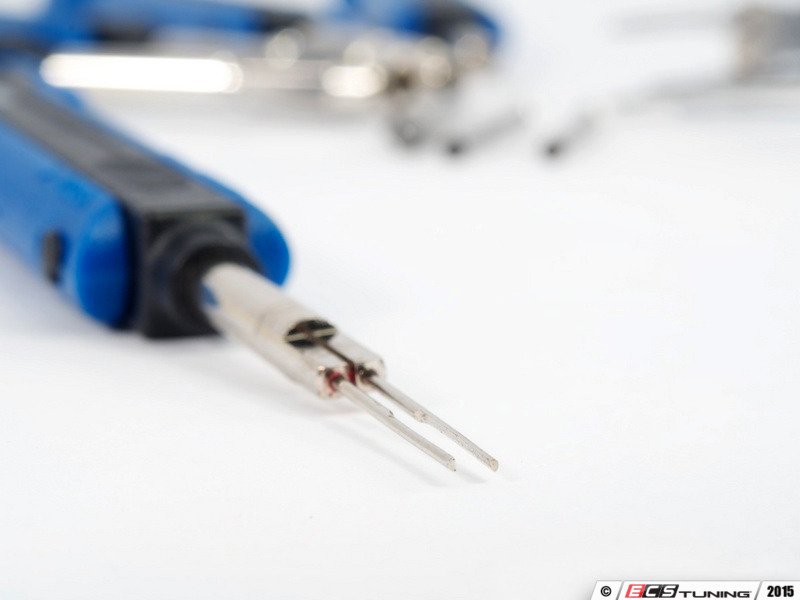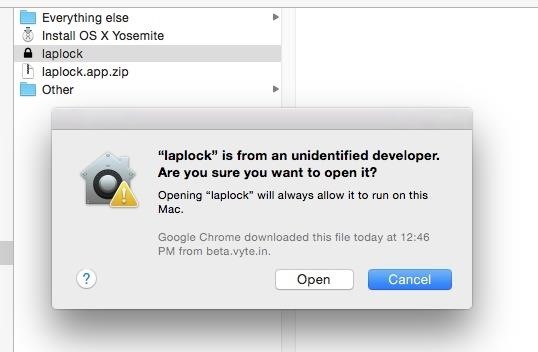Homebrew is the most popular package manager for Mac OS X. Homebrew Cask extends Homebrew with support for quickly installing Mac applications like Google Chrome, VLC, and more. No more dragging and dropping applications!
Apple released the new Mac OS X 10.10 Yosemite in the Mac App Store for everyone to download and install for free on October 16th, 2014, but downloading a 5+ GB file for each of your computers will take some serious time. The best thing to do is download it once and create a bootable install USB drive from the file for all of your Macs.
How to install Apple Xcode Command Line Tools for macOS Sierra. Complete guide to installation. To install the newest Xcode Command Line Tools, you’ll need the latest version of macOS. If you’ve owned your Mac for several years and haven’t updated macOS, be prepared to spend several hours. With help from Terminal and a super secret command included with the Mac OS installer, you can create a bootable installer to use for all your Macs. Screen shot courtesy of Coyote Moon, Inc.
This is an easy way to install Mac terminal utilities and graphical apps. It’s a bit like Chocolatey or OneGet on Windows, or the package managers included with Linux. It’s even a way to install many of the useful apps that aren’t in the Mac App Store.
The Basics
RELATED:Windows 10 Includes a Linux-Style Package Manager Named “OneGet”
Homebrew is a package manager designed for installing UNIX tools and other open-source applications on Mac OS X. It will quickly download and install them, compiling them from source. Homebrew Cask extends Homebrew with support for installing binary apps — the kind you normally drag to your Applications folder from DMG files.
Install Homebrew and Homebrew Cask
First, you’ll need the command-line tools for Xcode installed. On a modern Mac OS X system, you can install these just by running the following command in a Terminal window. You could also install the full Xcode application from Apple, if you prefer — but that takes up more space on your Mac and isn’t necessary.
Next, install Homebrew. You can just open a Terminal window, copy-paste the following command, and press Enter:
This script informs you what it will do. Press Enter and then provide your password to install it. By default, it installs Homebrew so you can use the brew command without typing the sudo command and providing your password.
Run the following command once you’re done to ensure Homebrew is installed and working properly:

UPDATE: The below command is no longer necessary. Homebrew Cask is now automatically installed as part of Homebrew itself.
Once you’re done, run the following command to install Homebrew Cask. It uses Homebrew to install Cask:
Install Graphical Apps With Homebrew Cask
Now you can get started installing those graphical apps you want. This involves some very simple commands. To search for one, use the following command:
To install an app, run the following command. Homebrew Cask will automatically download it, extract the app, and install it to your Applications folder.
To uninstall an app with Homebrew Cask, run the following command:
Install Open-source Utilities With Homebrew
The Homebrew command is the underlying package manager that installs all those UNIX and open-source utilities you might want. It’s the easiest way to install them on Mac OS X, just as it is on Linux. Like Homebrew Cask, it uses simple commands.
To search for a utility:
To download and install that package:
To remove that package from your system later:
For more details on using these commands, read the Homebrew Cask Usage guide or the Homebrew brew command manual on their official websites. Not every graphical application or Unix utility you’re looking for will be available, but most of them probably will be.
Unfortunately, there’s no graphical user interface for Homebrew Cask. This is a shame, because — while we geeks love easy terminal utilities — many people could benefit from easy software installation on Mac OS X. They can avoid all the downloading DMG files and clicking around. And, since Mac OS X is now home to Windows-style installer crapware, Homebrew Cask is a way around that.
READ NEXT- › What Can I Do with My Old iPhone?
- › How to Stream UFC 242 Khabib vs. Poirier Live Online
- › Free Download: Microsoft’s PowerToys for Windows 10
- › How to Overclock Your Computer’s RAM
- › What’s New in Chrome 77, Arriving September 10
Legacy desktop solution. Docker Toolbox is for older Mac and Windows systems that do not meet the requirements of Docker Desktop for Mac and Docker Desktop for Windows. We recommend updating to the newer applications, if possible.
Estimated reading time: 9 minutesDocker Toolbox provides a way to use Docker on older Macsthat do not meetminimal system requirements for Docker Desktop for Mac.
What you get and how it works
Docker Toolbox includes the following Docker tools:

- Docker CLI client for running Docker Engine to create images and containers
- Docker Machine so you can run Docker Engine commands from macOS terminals
- Docker Compose for running the
docker-composecommand - Kitematic, the Docker GUI
- the Docker QuickStart shell preconfigured for a Docker command-line environment
- Oracle VM VirtualBox
Because the Docker Engine daemon uses Linux-specifickernel features, you can’t run Docker Engine natively onmacOS with Docker Toolbox. Instead, you must use theDocker Machine command, docker-machine, to create andattach to a small Linux VM on your machine. This VM hostsDocker Engine for you on your Mac.
Tip: One of the advantages of the newerDocker Desktop for Mac solution is thatit uses native virtualization and does not requireVirtualBox to run Docker.
Step 1: Check your version
Your Mac must be running macOS 10.8 “Mountain Lion” or newer to run Dockersoftware. To find out what version of the OS you have:
Choose About this Mac from the Apple menu.
The version number appears directly below the words
macOS.If you have the correct version, go to the next step.
If you aren’t using a supported version, you could consider upgrading your operating system.
If you have macOS 10.10.3 Yosemite or newer, consider using Docker Desktop for Mac instead. It runs natively on the Mac, so there is no need for a pre-configured Docker QuickStart shell. It uses the native macOS Hypervisor framework for virtualization, instead of Oracle VirutalBox. Full install prerequisites are provided in the Docker Desktop for Mac topic in Docker Desktop for Mac.
Step 2: Install Docker Toolbox
Note: Docker are no longer maintaining the download.docker.com url forDocker Toolbox, therefore an unsigned warning (verified publisher dialog) isdisplayed during the installation process.
To download the latest version of Docker Toolbox, go to ToolboxReleases and download thelatest
.pkgfile.Install Docker Toolbox by double-clicking the package or by right-clickingand choosing “Open” from the pop-up menu.
The installer launches an introductory dialog, followed by an overview of what’s installed.
Press Continue to install the toolbox.
The installer presents you with options to customize the standard installation.
By default, the standard Docker Toolbox installation:
- installs binaries for the Docker tools in
/usr/local/bin - makes these binaries available to all users
- updates any existing Virtual Box installation
For now, don’t change any of the defaults.
- installs binaries for the Docker tools in
Press Install to perform the standard installation.
The system prompts you for your password.
Provide your password to continue with the installation.
When it completes, the installer provides you with some shortcuts. You can ignore this for now and click Continue.
Then click Close to finish the installer.
Step 3: Verify your installation
To run a Docker container, you:
- create a new (or start an existing) Docker Engine host running
- switch your environment to your new VM
- use the
dockerclient to create, load, and manage containers
Once you create a machine, you can reuse it as often as you like. Like anyVirtual Box VM, it maintains its configuration between uses.
Open the Launchpad and locate the Docker Quickstart Terminal icon.
Click the icon to launch a Docker Quickstart Terminal window.
The terminal does a number of things to set up Docker Quickstart Terminal for you.
Click your mouse in the terminal window to make it active.
If you aren’t familiar with a terminal window, here are some quick tips.
The prompt is traditionally a
$dollar sign. You type commands into thecommand line which is the area after the prompt. Your cursor is indicatedby a highlighted area or a|that appears in the command line. Aftertyping a command, always press RETURN.Type the
docker run hello-worldcommand and press RETURN.The command does some work for you, if everything runs well, the command’s output looks like this:
Install Tool For Mac On Terminal Movie
Optional: Add shared directories
By default, Toolbox only has access to the /Users directory and mounts it intothe VMs at /Users. If your project lives elsewhere or needs access to otherdirectories on the host filesystem, you can add them.
Use the VirtualBox GUI

You can configure shared folders in the VirtualBox UI.
Mac Tools Terminal Release Tool
Open the VirtualBox UI.
Click the Settings gear, then go to Shared Folders.
Select any existing listing under Machine Folders, thenclick the + icon.
Choose the Folder Path on the host, enter the Folder Namefor within the VM (or take the default, which is the same nameas on the host), and configure any additional options you need.
Choose Auto-mount if you want the folder to automaticallybe mounted into the VM, and choose Make Permanent for itto be considered a permanently shared folder.
Click OK to add the new folder to the Shared Folders list.
Click OK again to save your changes and exit the Settings dialog.
Use the command line
You can configure shared folders using a command like the following:
This command mounts /some/mount/location into the VM at /your-other-share-hame,owned by UID 1000 and GID 50.
Note: The autommount and permanent mount options are not supported usingthe command line.
How to uninstall Toolbox
Removing Toolbox involves removing all the Docker components it includes.
A full uninstall also includes removing the local and remote machinesyou created with Docker Machine. In some cases, you might want to keepmachines created with Docker Machine.
For example, if you plan to re-install Docker Machine as a part ofDocker Desktop for Mac you can continue to manage those machines throughDocker. Or, if you have remote machines on a cloud provider and youplan to manage them using the provider, you wouldn’t want to removethem. So the step to remove machines is described here as optional.
To uninstall Toolbox on a Mac, do the following:
List your machines.
Optionally, remove each machine. For example:
This step is optional because if you planto re-install Docker Machine as a partof Docker Desktop for Mac, you can import andcontinue to manage those machines through Docker.
In your “Applications” folder, remove the “Docker” directory,which contains “Docker Quickstart Terminal” and “Kitematic”.
Run the following in a command shell to fully remove Kitematic:
Remove the
docker,docker-compose, anddocker-machinecommands fromthe/usr/local/binfolder. Docker Desktop for Mac and Brew may also haveinstalled them; in case of doubt leave them, or reinstall them via Brew, orrerun Docker Desktop for Mac (no need to reinstall it).Optionally, remove the
~/.docker/machinedirectory.This directory stores some configuration and/or state, such as informationabout created machines and certificates.
Uninstall Oracle VirtualBox, which is installed as a part of theToolbox install.
Next steps
Try the Get started tutorial.
Dig in deeper with more tutorials and examples on building images, running containers, networking, managing data, and storing images on Docker Hub.